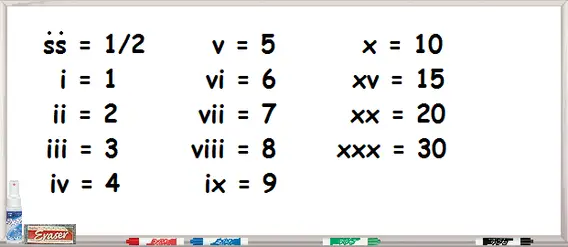Roman Numerals
By Ron Aylor, CPhT
Roman numerals date back to ancient times when symbols were used for pharmaceutical computations and record keeping. Some physicians still use them in dosage calculations; therefore, pharmacy technicians must understand Roman numerals.
The Romans depicted numbers using eight letters of the alphabet as shown here.
The
most common numerals you will use are those between 1/2 (ss) and 10 (X).
The letters L, C, D, and M are rarely used in practice, and are shown
above for your review only.
Rules of use
The main rule is to use the biggest numeral possible at each stage, so 15 is represented by xv not vvv nor xiiiii. It follows from this rule that numerals always go from left to right in descending order.
This could still lead to some very long strings. For
example using this rule; 99 would be LXXXXVIIII. So at some point a new
rule was invented. A smaller value letter to the left of a larger value
one is subtracted. So 4 becomes iv - which is 5 minus 1 - rather than
iiii. Roman numerals of the same value can be repeated in sequence, only
up to three times. Once you can no longer repeat, you need to subtract.
There are three rules about these smaller numerals which are placed to the left of a bigger one and subtracted:
1.
The subtractive numeral to the left must be I, X, or C. The 'five'
numerals V, L, and D cannot be used (nor will you see these numerals
repeated in sequence because when their values, when doubled, become
separate Roman numerals). M cannot be used because it is the biggest
numeral anyway.
2. The subtracted
number must be no less than a tenth of the value of the number from
which it is subtracted. So an X can be placed to the left of a C or an L
but not to the left of an M or a D. The correct way of looking at this
rule is that each power of ten is dealt with separately. So 49 is XLIX,
not IL.
3. Normally, only one smaller
number can be placed to the left. So 19 can be depicted XIX but 17
cannot be written XIIIX or IIIXX.
Forming Numbers
Where would you like to go now?

